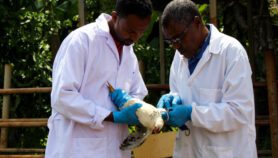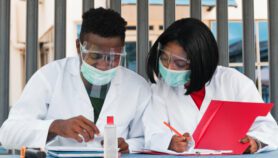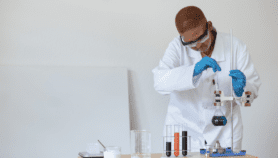Send to a friend
The details you provide on this page will not be used to send unsolicited email, and will not be sold to a 3rd party. See privacy policy.
Integrating modern and traditional medicine requires breaking down the legal and regulatory barriers that disadvantage the poor.
Before the colonial age, medicine across the tropics was almost entirely confined to traditional remedies and practices tailored to local cultures and natural resources.
Then the arrival of missionaries and colonialists in Asia, Africa and America brought modern scientific techniques and medicines that were used to serve the colonial imperative of promoting Christianity, commerce and ‘civilisation’.
The introduction of modern medicine has certainly been successful on one level. The colonial powers were much more adept at controlling epidemics, deploying mass vaccination programmes against smallpox, for example, and removing tumours and cataracts.
But colonial-era medicine has left another legacy — the marginalisation and downgrading of traditional medicine. Colonial powers promoted their values over traditional practices, establishing modern medicine as officially superior. In many African countries, for example, herbalists were not forbidden to practice but they were largely considered inferior or ignored, and traditional divination, sorcery and witchcraft were outlawed.
This marginalisation of traditional medical practices was later reinforced through organised healthcare systems and hospitals built on developed country models, which have continued to dominate the health systems of all countries.
Recognition of value
But, in the race to meet the Millennium Development Goals, combat increasing drug resistance and tackle new diseases, traditional medicine is making a comeback. Governments, drug companies, researchers and international aid organisations increasingly recognise the value of traditional medicine and its practitioners — as a source of potential new blockbuster drugs and as alternative providers of primary healthcare.
The WHO’s Beijing Declaration in 2008 marked a milestone in acknowledging the need to integrate traditional medicine into national health systems.
But achieving this is no easy task, not least because modern health systems are built on the legal and procedural frameworks inherited from the developed world. They may serve the purpose of advancing and propagating modern medicine but they are not necessarily conducive to promoting traditional practices.
One example is the stringent intellectual property regime. It cannot easily cope with the traditional approach to medical knowledge, which is commonly owned and freely handed down through generations.
The tightly defined tests for safety and efficacy that are a hallmark of drug regulation are another constraint. They have been developed to test standardised drugs at fixed dosages and rely on being able to identify active ingredients and provide easily reproducible results. But traditional medicines are inherently diverse, both in how they are formulated and dispensed.
Spectrum of issues
This week, we put the challenge of integrating modern and traditional medicine under the spotlight in a series of articles that debate key issues and highlight effective strategies for integration on the ground.
A background article outlines the differences in how modern and traditional medicine are practised, evaluated and managed, and explores where and how these clash (see Integrating modern and traditional medicine: Facts and figures).
The practical hurdles to developing traditional medicines into modern pharmaceutical products, in particular, can be significant. Science journalist Yojana Sharma describes how they are being tackled to gain global regulatory acceptance (see Taking traditional medicines mainstream).
In Africa, according to South African drug development expert, Kelly Chibale, the first step must be to create a database and physical collection of natural products from traditional medicine. Modern methods of screening, assessment and preclinical pharmacology can then be applied to develop commercial products (see Discovering Africa’s drug potential).
If modern science can be used to explore traditional medicines, so too can it be used to reinforce the knowledge systems that support them. Antony Taubman, head of intellectual property at the World Trade Organization, argues that the latest information technologies are well suited to characterising the local and cultural context of traditional medical knowledge and of preserving and transmitting it for use in modern practice (see Recognising traditional health systems).
But integrating modern and traditional medicine extends beyond simply applying modern methods to ancient knowledge. Traditional medicine experts, Bhushan Patwardhan and colleagues, call for an integrative knowledge system that recognises the epistemological differences between traditional medicine and modern science and establishes norms for cross-cultural interactions (see Ending medical dominance over the developing world).
It can be done. Oswaldo Salaverry, director of the National Centre for Intercultural Health in Peru, describes the progress in his country in embedding traditional medical practices, such as vertical birth, into the national healthcare infrastructure for the benefit of public health (see Modernising traditional medicine must work for locals).
Global effort is needed
Salaverry’s is not a lone voice. The developing world has many examples that show that modern and traditional medicine need not clash — from Chinese hospitals that provide herbal therapy alongside conventional medicine to Ecuadorian clinics where modern general practitioners work alongside traditional ‘yachaks’ (shamans).
But for the two systems to work in greater harmony on a large scale, we need a global effort to break down the legal, regulatory and conceptual barriers that support the promotion of modern medicine at the expense of traditional practices.
This means, for example, maintaining an active debate within the World Intellectual Property Organization about access and benefit sharing to ensure that the originators and custodians of traditional medicine get the respect, recognition and equitable share of the benefits they deserve.
It also means building on the WHO’s work to adapt systems of regulation, testing, training and licensing or certification with methodologies that suit traditional medicine.
Integrating modern and traditional medicine is a major challenge. But, given the growing recognition of the limitations of modern medicine, it is one that the global community must rise to if we are to improve public health in the developing world.
Sian Lewis, Commissioning editor
David Dickson, Director
SciDev.Net













